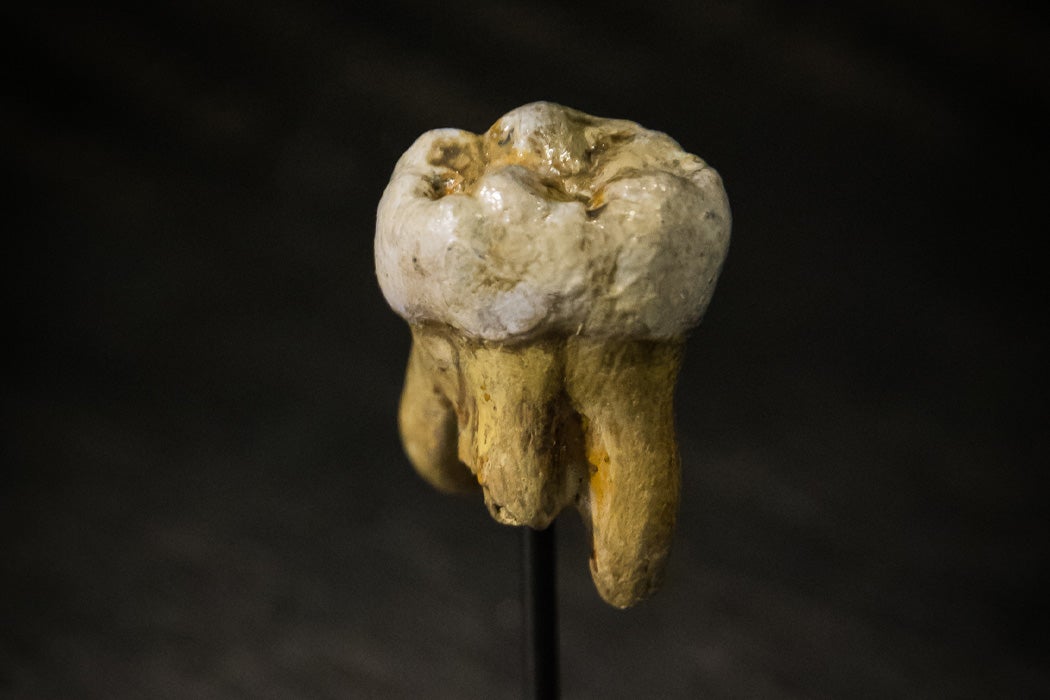In remote Southeastern Siberia in the large Denisova Cave, archaeologists have found evidence of multiple human ancestors, including bones of Neanderthals and artifacts of early modern human culture. But there was also evidence that yet another species, known only as Denisovans, also occupied the cave. The Denisovans are the least-known and most mysterious of our ancestors.
The evidence of Denisovans is very limited. Correspondent Ann Gibbons writes in Science that the only remains are a child’s finger bone and a couple of teeth. DNA extracted from the finger bone provided ironclad evidence that Denisovans were distinct from Neanderthals. Unfortunately, researchers have learned little about the Denisovans, except that the finger bone belonged to a young girl. The teeth, both molars, were similarly unhelpful. Analysis showed that the large teeth were distinct from both Neanderthal and human teeth.
While it has been difficult to learn about the Denisovans directly, nevertheless the genetic evidence is so clear that it has been possible to search for markers in the modern human genome. It has long been known that Neanderthals and Modern Humans frequently interbred, and apparently the Denisovans got in the mix too. The interchange appears to have been beneficial, exchanging genes that helped shape our immune system. Aboriginal Australians share up to 5% of Denisovan DNA, suggesting that the species once roamed far beyond the Altai Mountains and probably across East Asia. At some point they must have interbred with the Melanesian people who set sail and populated Australia tens of thousands of years ago.
Once a Week
The extent to which the species overlapped within Denisova Cave has long been a subject of speculation, but Elizabeth Pennisi writes that there was extensive interbreeding between Neanderthals and Denisovans. Pennisi also describes how Denisovan remains contain evidence of yet another, even more ancient species that is still unknown with which they must have interbred in the distant past. It seems Denisova Cave could be the setting for an ancient soap opera. New research helps explain how this happened: additional discoveries suggest that Denisovans and Neanderthals may have overlapped in the cave for up to 50,000 years.







